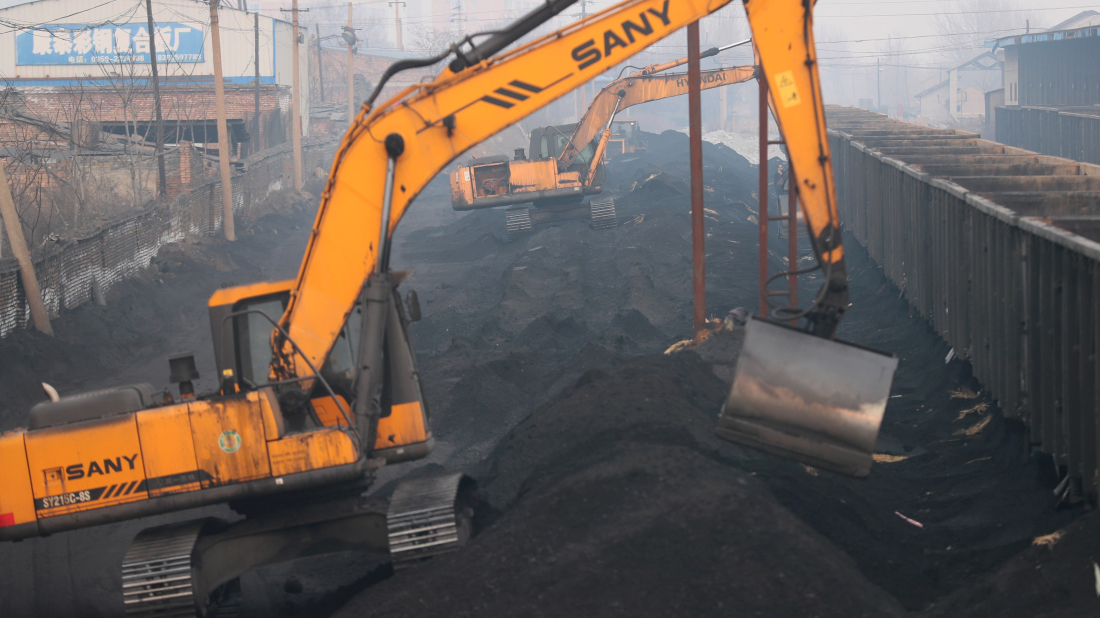UN Security Council to hold emergency meeting after Israel recognises Somaliland
The UN Security Council is set to hold an emergency session on Monday to discuss Israel’s recognition of Somaliland as an independent state, amid cr...

China approved 11.29 gigawatts (GW) of new coal-fired power capacity in the first quarter of 2025, surpassing the 10.34 GW approved in the entire first half of 2024, according to a new report released by Greenpeace on Thursday.
The sharp increase in approvals signals a renewed push for coal power, despite a significant 41.5% drop in coal project approvals in 2024, when total new capacity fell to 62.24 GW — the first annual decline since 2021.
“The year 2025 marks a pivotal moment in the country’s energy transition. There is already enough existing capacity to meet today’s peak demand. Approving a new wave of large-scale coal projects risks creating overcapacity, stranded assets, and higher transition costs,” said Gao Yuhe, climate and energy project manager for Greenpeace East Asia.
The Greenpeace report noted that while not all approved plants may be built, the increasing project pipeline suggests continued dependence on coal, which complicates China’s long-term emissions targets. The country has pledged to reach peak carbon emissions by 2030 and achieve carbon neutrality by 2060.
China’s state planner, the National Development and Reform Commission, and the National Energy Administration did not respond to Reuters’ requests for comment.
This year also marks the final year of China’s 14th Five-Year Plan (2021–2025), during which 289 GW of new coal capacity has been approved — roughly double the 145 GW sanctioned during the 2016–2020 plan.
Looking ahead, China has announced it will begin phasing down coal during the 2026–2030 plan period, though no specific reduction targets have been set. Greenpeace urged Beijing to adopt more ambitious carbon goals and provide a clear timetable for coal phase-out.
The organization also noted that emissions from China’s power sector could peak in 2025, as growth in wind and solar energy continues to outpace coal.
New York placed the state under emergency measures on Friday as a powerful winter storm brought the heaviest snowfall since 2022, disrupting travel across the north-east of the United States.
Russia launched missiles and drones at Kyiv and other parts of Ukraine overnight on Saturday, Ukrainian officials said, ahead of talks on Sunday between President Volodymyr Zelenskyy and U.S. President Donald Trump aimed at ending nearly four years of war.
The United States carried out a strike against Islamic State militants in northwest Nigeria at the request of Nigeria's government, President Donald Trump and the U.S. military said on Thursday.
Israel became the first country to formally recognise Somaliland as an independent state on Friday, drawing strong condemnation from Somalia and regional and international organisations.
President Volodymyr Zelenskyy has said he will meet U.S. President Donald Trump on Sunday to discuss territory and security guarantees, as diplomatic efforts intensify to end Russia’s war in Ukraine.
Azerbaijan is strengthening its role in international energy projects through foreign investment, Azerbaijan’s Foreign Minister Jeyhun Bayramov said on Thursday, describing the energy sector as a central pillar of the country’s economic diplomacy.
The move is intended to combine digital innovation and long-term infrastructure planning with further modernise urban mobility while strengthening the country’s position as a key transit hub across Eurasia.
Foreign aid and its political implications are at the centre of public debate in Georgia with mayor of Tbilisi Kakha Kaladze echoing U.S. Secretary of State Marco Rubio's stance on USAID.
Jeyhun Bayramov expressed concerns regarding the Russian Investigative Committee’s decision to close the criminal case related to the AZAL airplane crash.
Iran has rolled out a test vending of imported premium at market price in Tehran to address the country's domestic petroleum consumption deficit.
You can download the AnewZ application from Play Store and the App Store.

What is your opinion on this topic?
Leave the first comment